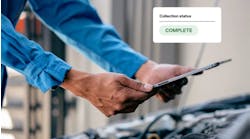Volkswagen is near to finalizing the last of three settlements, amounting to $21.8 billion in penalties, which resulted from the German automaker’s use of “defeat devices” in their 2.0L and 3.0L diesel vehicles. While the majority of these funds will address civil claims, $2.7 billion will be directed to the Environmental Mitigation Trust, which will fund state-level clean transportation grant programs. These funds present the greatest opportunity for fleets and equipment owners to purchase new trucks, buses, and non-road equipment.
Though the funds could be a boon for fleets, fuel providers, vehicle makers, and technology developers, questions still abound. How will the states distribute the funds? What types of projects will be eligible? When will funds be available?
The following are funding priorities that will likely be seen across the nation:
◗ States may first look to fund government and municipal fleets. The reason for that is simple: grants for these fleets can cover up to 100% of the cost of a new clean diesel or alternative fuel vehicle.
◗ To help with administration of the funds, states may choose to funnel them into existing grant programs (e.g., the Texas Emissions Reduction Plan or the Pennsylvania Alternative Fuels Incentive Grant Program) rather than establish new, VW-specific grant programs.
◗ States may focus their funds in specific counties, rather than fund statewide projects, in order to address NOx emissions more directly. This will be especially true in states with ozone nonattainment areas.
◗ States may allocate up to 15% of their VW funds to light-duty zero-emission vehicle supply equipment, which includes equipment for both electric and hydrogen fuel cell vehicles.
These trends are not set in stone, however. Each state is required to solicit feedback from stakeholders on their funding priorities. Thus, now is the time to get in front of state agencies and advocate for funding.
There are still a number of hurdles that have to be cleared. The Environmental Protection Agency and the California Air Resources Board must designate the trustee who will be responsible for managing the $2.7 billion Environmental Mitigation Trust. Then each state must select its beneficiary, which is the state-level agency that will design the grant programs to distribute the funds.
That timeline could stretch through summer, so the first rounds of grant funding are expected to open in the fall of this year. But this extended timeline has not stopped the wheels from turning. States are beginning to engage with stakeholders, and agencies are choosing what types of projects to fund first.
Fuel providers, vehicle makers, technology developers, and others that are taking a “wait and see” approach are at risk of missing out on the biggest and best opportunity thus far: making your voices known to these agencies to make sure your fuels, vehicles, equipment, and charging technologies are included in each state’s list of eligible projects.
As to how much applicants can expect to receive per vehicle, there isn’t a clear answer yet. It’s ultimately up to each state to decide. That’s why companies that hope for funding should start now to work with state agencies. This is especially important because states will decide how much funding may be available for each type of vehicle or equipment.
The bottom line? The time to act is now. Fuel providers, fleet managers, OEMs, and technology providers should review their strategic priorities and geographies. By looking into where your fleet wants to go and then building relationships with state agencies, you can set the groundwork for advancing your company’s goals and, ultimately, gaining access to the Volkswagen settlement funds.
Lastly, VW funds are finite. The financial boon from this emissions scandal can only go so far. However, federal and state grant opportunities will continue to exist in this space as agency leadership remains dedicated to alternative fuel and advanced technology projects. Therefore, engagement and collaboration with these state agencies will reap substantial benefits in the long run.


